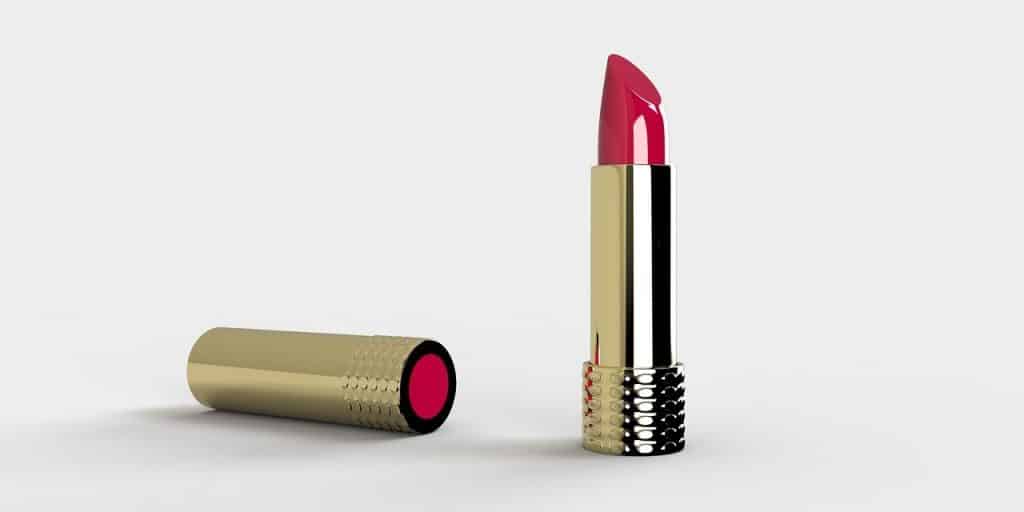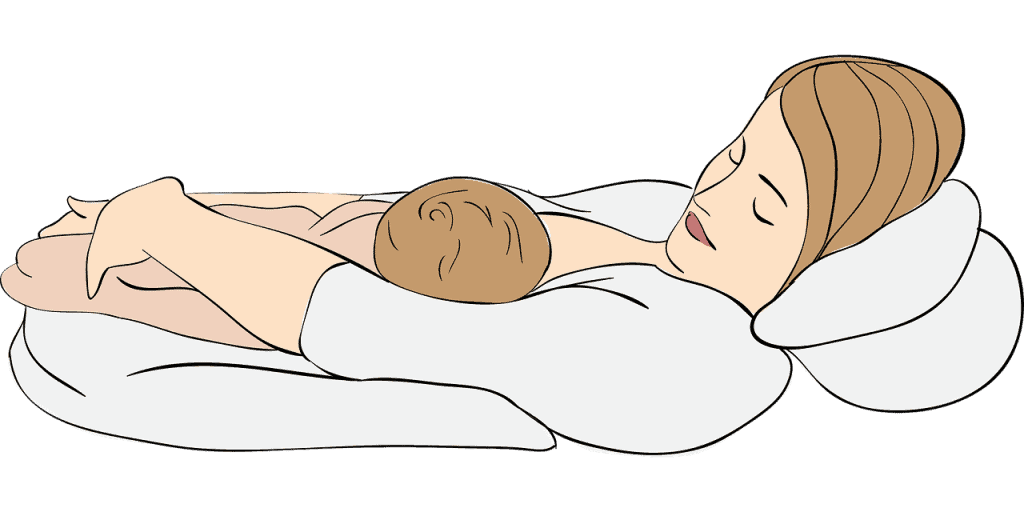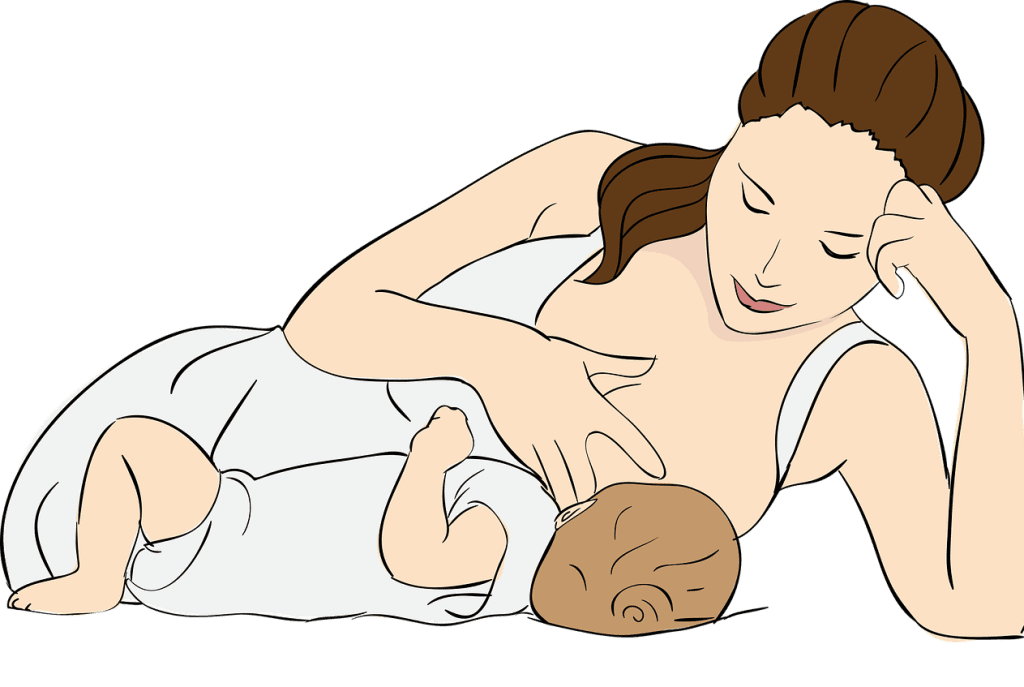Breastfeeding is one of the most challenging experiences for mothers, especially first-timers. Getting a good latch, for instance, requires practice. Mothers must help their babies get a good latch to avoid developing a side effect of improper latch called lipstick nipple latch.
You can prevent lipstick nipple latch by creating a quiet, comfortable breastfeeding space. Letting your baby lead, pointing your nipple up, and placing the baby’s chin against your breast also helps. Try different feeding positions and unlatch and start over if needed.
Nursing mothers can easily prevent developing lipstick-shaped nipples using various breastfeeding techniques. The main point is encouraging the baby to deepen their latch when feeding.
How to Prevent Lipstick Nipple Latch When Breastfeeding

Lipstick nipple latch refers to the condition wherein the nipple temporarily looks slanted or tapered due to a shallow latch during nursing. The nipple resembles the tip of a newly opened tube of lipstick, hence the name ‘lipstick nipple.’
Although this condition is common among nursing mothers, you must take the necessary steps to prevent and correct a lipstick nipple latch immediately after noticing it. Otherwise, you might suffer from breastfeeding pain and insufficient milk supply.
There are various methods to prevent or fix a lipstick nipple latch. As mentioned earlier, the most crucial step is helping your baby get a deep latch. You can try the following techniques to determine what works best for you and your baby.
1. Rule Out Potential Medical Issues
One of the signs of lipstick nipple latch is pain during breastfeeding, so you might immediately assume that you have this condition. However, ensuring the pain doesn’t stem from a bacterial infection, a thrush, or other possible medical issues is critical.
As explained above, a lipstick nipple usually results from an improper latch. The infant sometimes can’t get a good latch because they have a tongue tie. Tongue tie or ankyloglossia refers to a condition where a baby has limited tongue movements since birth.
Take your baby to the hospital to check if they have a lip or tongue tie. This process is necessary to rule out the possible causes of your pain during and after breastfeeding. If the pediatrician diagnoses your baby with a tongue tie, they’ll refer you to a pediatric dentist for treatment.
2. Create a Comfortable Breastfeeding Station
One of the necessities for your breastfeeding station is a nursery chair. Choose one with wide padded armrests for additional support. You can also purchase one with glider recliners, which can be helpful when rocking or soothing your baby to sleep.
Ensure other necessities, such as cleaning wipes, nursing pillows, burp cloths, nursing pads, and extra diapers, are within arm’s reach for easy accessibility. It’s essential to stay hydrated, so keep a water bottle near you. Add some healthy snacks to your nursing station for replenishment.
3. Let Your Baby Find the Nipple by Themselves
When breastfeeding, support your infant’s head and guide them towards your breast. Allow them to find the nipple on their own so they can latch on it naturally. Babies usually open their mouths wide once they locate the nipple, but some need assistance.
4. Open Your Infant’s Mouth Wide

If your baby finds it hard to open their mouth widely, rub your nipple on their top lip. As your infant opens their mouth, gently tug their chin downwards. It helps to aim your nipples past their gums for a deep latch and to avoid nipple pain.
It helps to know what a correct latch looks like to prevent developing a lipstick nipple latch. You’ll know your baby does a proper latch if the tip of their nose and chin touch your breast. The infant’s lips must not be sucked in but spread against the areola.
Your baby has a proper latch if you hear or see them swallow. You’ll also notice their ears wiggle slightly. Lastly, you might not see their tongue because it’s under the breast.
A good latch indicates a pain-free breastfeeding session. Your baby doesn’t need to turn their head left and right because they’re in the correct position, and your breast fills its mouth.
5. Adjust Your Baby’s Lower Lip
One of the primary causes of lipstick nipple latch is misplaced pressure. To prevent this, adjust your baby’s lower lip so it’s the first to make contact with your breast. Their lower lip must be far from the nipple base and aligned with the edge of the areola.
6. Aim Your Nipple Upwards

Once your baby’s mouth is wide open, point your nipple towards the roof of their mouth to encourage them to latch correctly. Doing so will aid them in sucking not just the nipple but also the areola to avoid a painful breastfeeding session.
7. Squeeze Your Breast
Another way to prevent lipstick nipple latch is by squeezing your breast. Compressing it before offering it to your baby can help them get more breast tissue in their mouth. As mentioned earlier, if the baby sucks only on your nipple, you’ll likely develop a lipstick-shaped nipple.
8. In Case of a Poor Latch, Unlatch It and Do It Over Again
If your baby sucks on only the nipple (excluding the areola), you’ll feel pain while breastfeeding. Gently tug the corner of their mouth to break the latch, but ensure that your finger is clean. Once you break your baby’s suction, help your baby latch on again.
A poor latch will make your baby feel frustrated. If this is the case, take a break and hold them upright between your breasts. Establish skin-to-skin contact, soothe them by singing or talking, and breastfeed again after a while.
9. Assume a Laid-Back Breastfeeding Position

The breastfeeding position is crucial for the mother and child’s comfort. After all, good positioning helps prevent a case of lipstick nipple latch. It also makes your nipples stay healthy while feeding your baby efficiently.
Place your baby close to your body with their chin slightly tilted upwards so they can latch on more breast tissue as possible. For mothers who nurse for the first time, pressing the baby’s nose as close as possible can cause worry, but rest assured, babies can breathe just fine in this position.
10. Try Various Feeding Positions
There are multiple positions you can do while nursing. If the laid-back feeding position doesn’t work, find whatever makes you and your baby comfortable. Some breastfeeding positions you can try are the cross-cradle hold, cradle hold, football hold, and side-lying.
11. Use a Nursing Pillow
A nursing pillow can be a lifesaver for nursing mothers. It helps bring your infant to the right height for breastfeeding, which encourages proper latching. Nursing pillows are also helpful for providing support for your neck, back, and shoulders while feeding.
When buying a nursing pillow, purchase one firm enough to support your baby’s weight. It should also be made of hypoallergenic and non-toxic materials to ensure your child’s safety. Lastly, it’s better if it has a removable cover you can easily throw in the washing machine.
12. Use a Nipple Shield
Nipple shields can be helpful. However, in many instances, the disadvantages can outweigh the benefits. For example, they can affect milk supply, encourage dependency, and cause mastitis.
Therefore, a nipple shield should be your last resort when you have trouble nursing because of a poor latch or other issues. It’s significant to emphasize that you should only use it temporarily and under the supervision of a medical professional.
Frequently Asked Questions

Should I Stop Breastfeeding If I Develop a Lipstick-Shaped Nipple?
You don’t necessarily have to stop breastfeeding if you have a lipstick nipple latch. After all, there are ways to fix it you can do on your own. However, it’s significant to remember that to breastfeed or not ultimately depends on you.
If you find it extremely tedious and painstaking to nurse your baby, there’s no harm in finding other alternatives. As long as your baby is safe, healthy, and well-fed, nothing’s more important. Make sure to consult your healthcare provider for other nutritional guidelines.
What are the Other Breastfeeding Complications Aside from Lipstick Nipple Latch?
An improper latch can cause other breastfeeding complications besides developing a lipstick-shaped nipple. For instance, you might have cracked and bleeding nipples. In most cases, the reason for this is an improper latch.
If you experience changes in nipple color and nipple blisters alongside cracked and bleeding nipples, visit a doctor. Your nipples changing color might indicate loss of blood supply. Meanwhile, nipple blisters can lead to mastitis.
Many nursing mothers might experience pain when breastfeeding, especially during the first few weeks. However, you must know when to seek medical help.
Final Thoughts
For first-time mothers or not, breastfeeding can be demanding. One of the many things you must watch out for is developing lipstick-shaped nipples due to improper latch. This condition is easily preventable but must be immediately corrected to avoid further complications.
If you develop a lipstick nipple despite doing the prevention techniques described above, visit your healthcare provider or lactation consultant to seek professional medical advice. They can help you discover what works best for you and your baby through trial and error.
